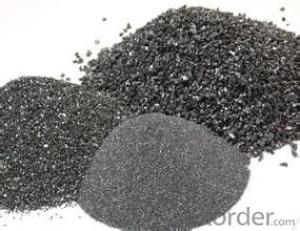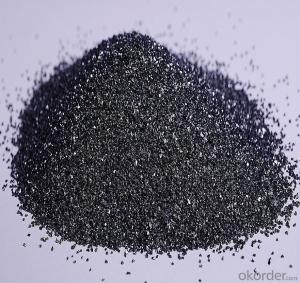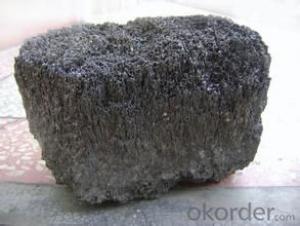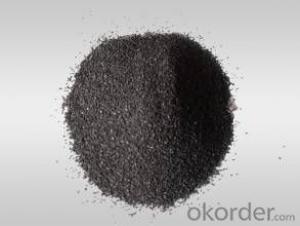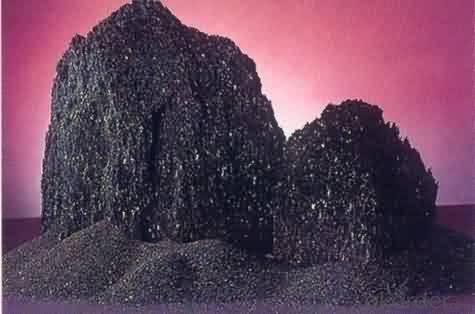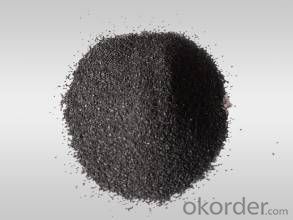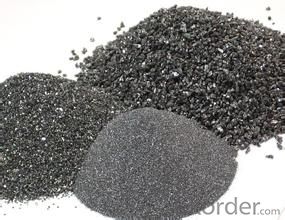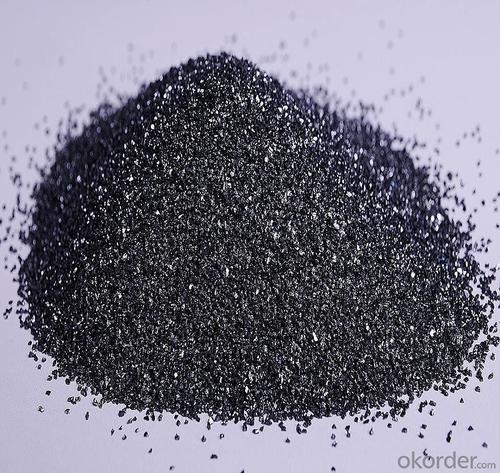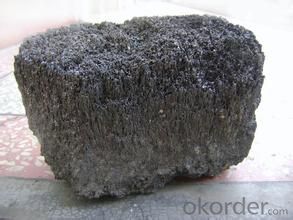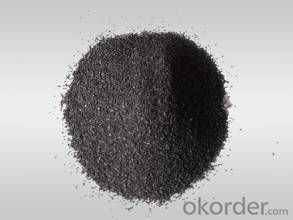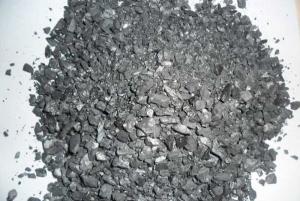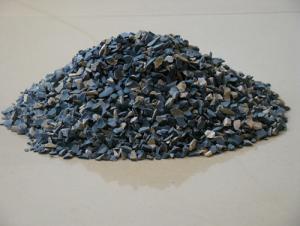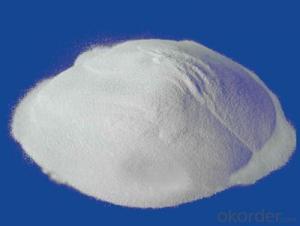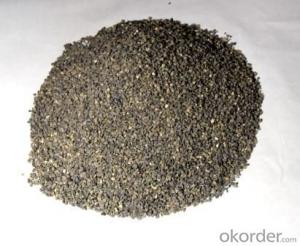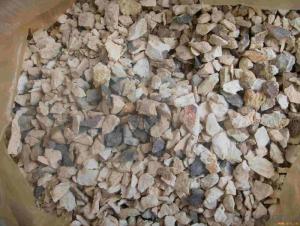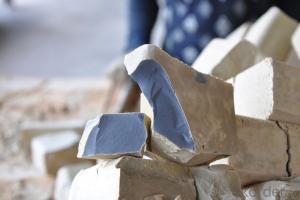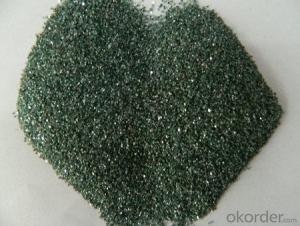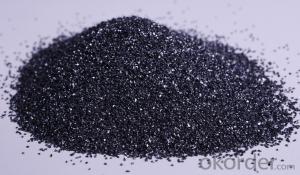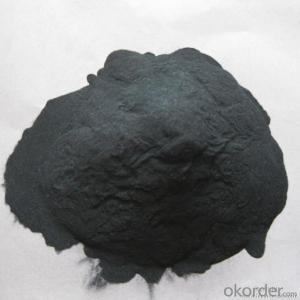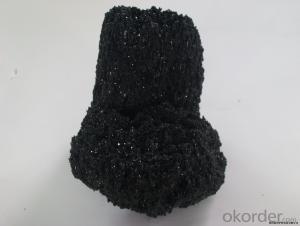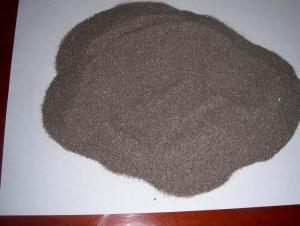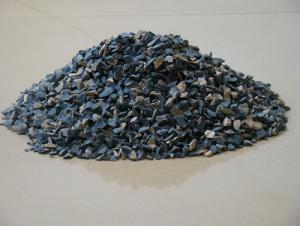Raw Materials for Refractory - 97 Silicon Carbide90/Recrystallized Silicon Carbide/SiC
- Loading Port:
- Tianjin
- Payment Terms:
- TT OR LC
- Min Order Qty:
- 25 m.t.
- Supply Capability:
- 3000 m.t./month
OKorder Service Pledge
OKorder Financial Service
You Might Also Like
97 Silicon Carbide90/Recrystallized Silicon Carbide/SIC
1.Structure of Silicon Carbide Description
Black Silicon Carbide is produced with high temperature in a electric resistant furnace from a mixture of quartz sand and petroleum coke.
Black silicon carbide is typically used for working on cast iron ,non-ferrous metals, stone, leather, rubber, and other materials which requires sharp cutting characteristics. The mineral is also used widely as a refractory material and metallurgical additive.
2.Main Features of the Calcined Bauxite
Its hardness is between that of fused alumina and synthetic diamond and mechancial intensity of it is also greater than that of fused alumina. It is brittle and very sharp and has a certain degree of electrical and heat conductivity.
3.Main usage of the Calcined Bauxite
1.Grinding non-ferrous materials, rock, stone, leather, rubber, finishing tough and hard materials
2.Bonded abrasive tools, lapping and polishing
3.Widely used as a metallurgical additive and refractory material
4.Refractory
4. Calcined Bauxite Images
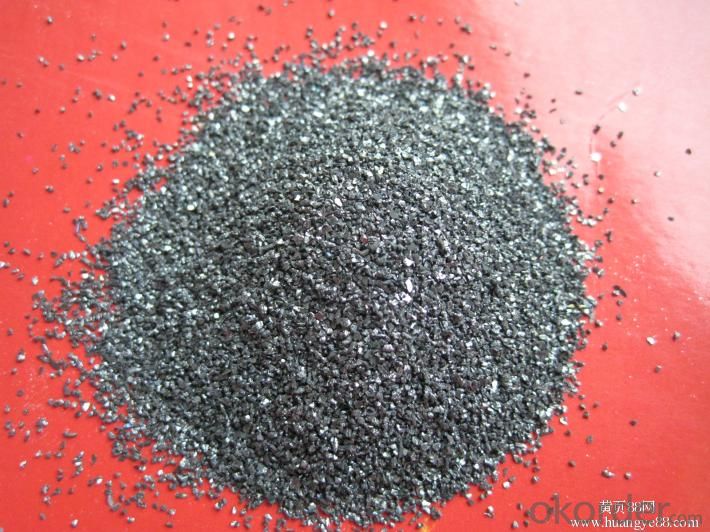
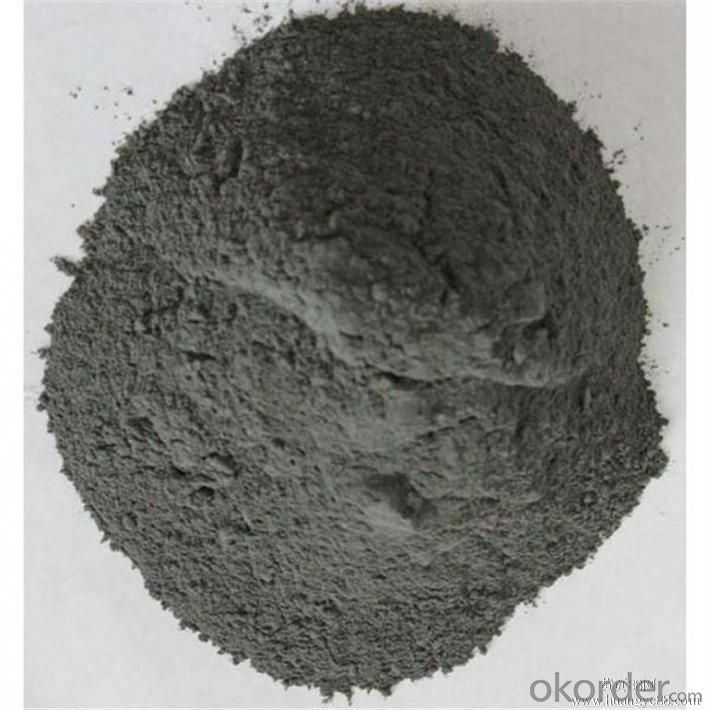
5. Calcined Bauxite Specification
Specifiction | SiC | F.C | Fe2O3 | Moisture |
SiC 86 | 86%min | 2.4%max | 2.0%max | 0.2%max |
SiC 88 | 88%min | 2.3%max | 2.0%max | 0.2%max |
SiC 90 | 90%min | 2.0%max | 1.8%max | 0.2%max |
SiC 92 | 92%min | 1.8%max | 1.7%max | 0.2%max |
SiC 93 | 93%min | 1.8%max | 1.6%max | 0.2%max |
SiC 95 | 95%min | 1.0%max | 1.3%max | 0.2%max |
SiC 97 | 97%min | 0.8%max | 1.2%max | 0.2%max |
SiC 97.5 | 97.5%min | 0.8%max | 0.9%max | 0.2%max |
SiC 98 | 98%min | 0.5%max | 0.5%max | 0.2%max |
6.FAQ of Calcined Bauxite
1). Q: Are you a factory or trading company?
A: We are a factory.
2). Q: Where is your factory located? How can I visit there?
A: Our factory is located in Ningxia, China. You are warmly welcomed to visit us!
3). Q: How can I get some samples?
A: Please contact me for samples
- Q: Can someone professionally introduce the classifications of refractories?
- It can be divided into two categories of ordinary and special refractory. Ordinary refractories can be devided into acidic, neutral and alkalinee refractories according to chemical properties. Special refractory can be devided into high temperature oxide, refractory compounds and high-temperature composite materials according to the compositions. Furthermore, it canbe devided into ordinary refractory products (1580 ~ 1770 ℃), advanced refractory products (1770 ~ 2000 ℃) and super refractory products (above 2000 ℃) according to the strength of refractoriness. It can be divided into bulks (standard brick, special-shaped brick, etc.), special shape (crucible, sagger, pipe, etc.), fibrous (aluminum silicate, zirconia and boron carbide, etc.) and Indefinite shape (refractory clay, castableand ramming mass, etc.) according to the shapes of products. According to the sintering process, it can be divided into sintered products, cast products, melting jetting products.
- Q: Who knows the refractoriness of high temperature lightweight firebricks?
- pores of high temperature lightweight refractory bricks is made by lightweight aggregate such as combustibles, foaming?agent, and hollow?sphere production with better thermodynamic stability. Refractoriness reaching 1200 ℃ or more is first grade refractories. fire resistance of building blocks of 100mm thick can reach 225 minutes, 200mm thick brick 480 minutes.
- Q: How about the prospect of refractory material?
- Cost reduction Refractory material is affiliated to base material factories such as steel, cement and glass. But the situation becoms more severe due to lmaterial reduction and waste. It is necessary to find a substitutional raw material.
- Q: I know which material is the fire resistance rolling shutter door
- the materials of fire resistance rolling shutter door are: the inner of fire resistance rolling shutter door is generally filled with aluminum silicate fiber cotton. fire resistance rolling shutter door is divided into AAA inorganic fireproof rolling shutter door and steel fire resistance rolling shutter door. the fireproof?performance of inorganic fireproof rolling shutter door is better, but steel fire resistance rolling shutter door has a certain wind load resistance, which can be installed outdoors.
- Q: How to hang the suspended brick in the refractory masonry?
- First you can weld the metal fastener of the suspended brick and then hang up the brick.
- Q: How long is the duration of fire resistance that fireproof window of level B can endure?
- The duration of fire resistance: fireproof window of level A shall not be less than 1.5h, while level B shall not be less than 1.0h. The frame of both fire proof windows A and B are made of steel, and the glass, not less than 26mm, is composite insulation fireproof glass. Monolithic fireproof glass window is neither B fire proof window nor A fire proof window, but non insulated fire proof window.
- Q: How long usually will the A-level fireproof materials prevent the flame?
- A-level fireproof materials refer to the materials which are made of non-combustible materials, it is a different concept from fire resistance. non-combustible elements: Components are made of non-combustible materials. Non-combustible materials refer to materials that will not burst into flame, and burn as well as be carbonized when affected by fire and high temperature in the air. Fire resistance: Having a fire resistance test on any building components -----according to the standard time-temperature curve. This period starts from the time when affected by fire and ends up with losing the ability to support or to insulate fire or the integrity of the components. It can be expressed in hours.
- Q: Is aluminium oxide refractory material?
- Calcination aluminium oxide is refractory material of fine performance made from pure aluminium oxide through high-temperature calcination. It can be made into coarse-grained material, fine-grained material, fine powder and micro powder, which can be made into pure jade burnt products. For example, corundum brick, lightweight corundum bricks. It can also be made into a variety of unburning products together with other materials, such as carbonaceous materials. For example, aluminum carbon and aluminium zirconium carbonaceous materials. As for the production of unshaped refractory material, there are more species. It can be corundum, rubing grain, corundum spinel and can also be added into other materials to improve specific performance. It isn't limited to high-alumina castable refractory and it can be castable refractory, ramming?mass, impressionable plastic material, gunning mix and refractory mortar.
- Q: what needs to be noted when choosing and using blast furnace fireproof materials?
- it depends on the size of the blast furnace. below 200 cubic meters alumina bricks and carbon brickcan be used. 200 cubic meters and above are currently integrated bottom, not the same as the size of the cubic level, varying in the use of refactory. I hope my answers above are helpful to you and your ideal anwers.
- Q: Who knows the fire endurance of rock wool color plate?
- I'm glad to answer your question and offer you some of my experiences, for reference only. In fire?safety?rules, it can be divided into non-combustible component, hard-combustible component, combustible component according to the combustible degree of building materials. Rock wool board is building board recombinated artificially by fibers processed by coated steels and inorganic minerals like basalt mineral, because steel plate and rock wool which is the main components are non-combustible material, so rock wool board should be considered as non-combustible component. The fire endurance of rock wool board has its own judging criteria. Lose sustaining power, integrity and fire insulation function. Its fire endurance is within 2 hours.
Send your message to us
Raw Materials for Refractory - 97 Silicon Carbide90/Recrystallized Silicon Carbide/SiC
- Loading Port:
- Tianjin
- Payment Terms:
- TT OR LC
- Min Order Qty:
- 25 m.t.
- Supply Capability:
- 3000 m.t./month
OKorder Service Pledge
OKorder Financial Service
Similar products
Hot products
Hot Searches
Related keywords


